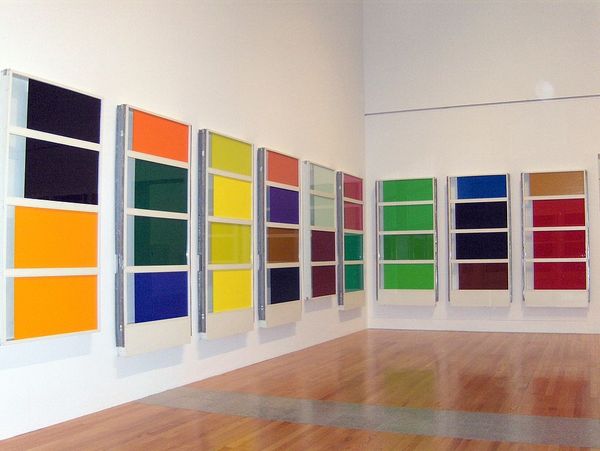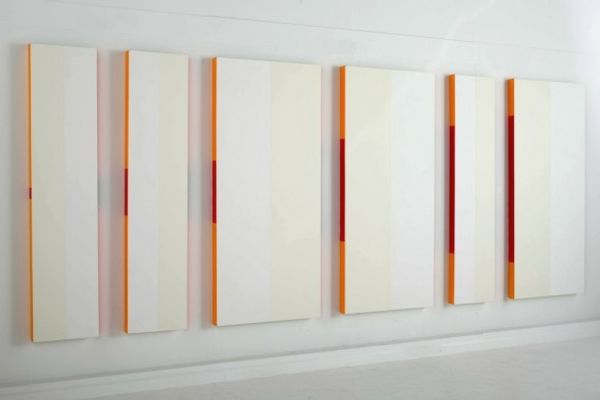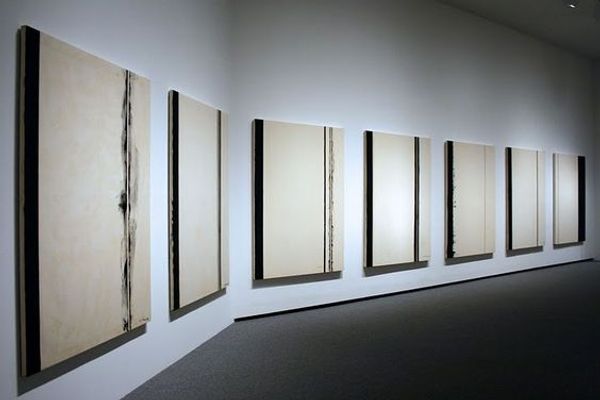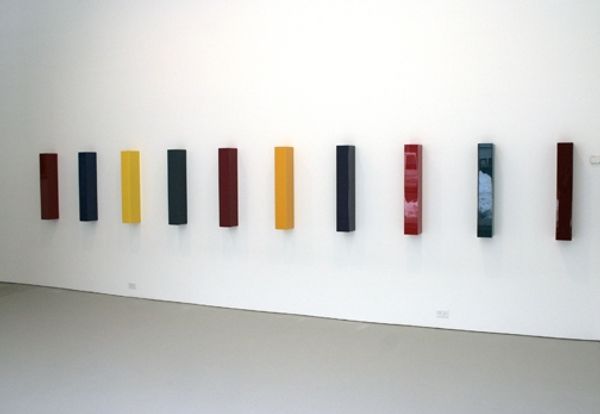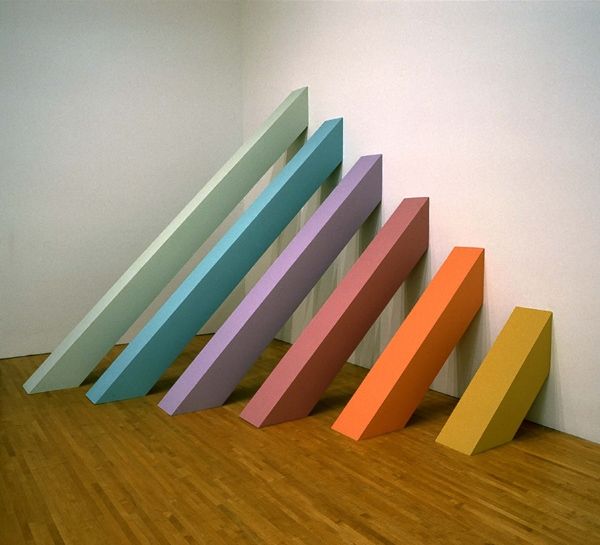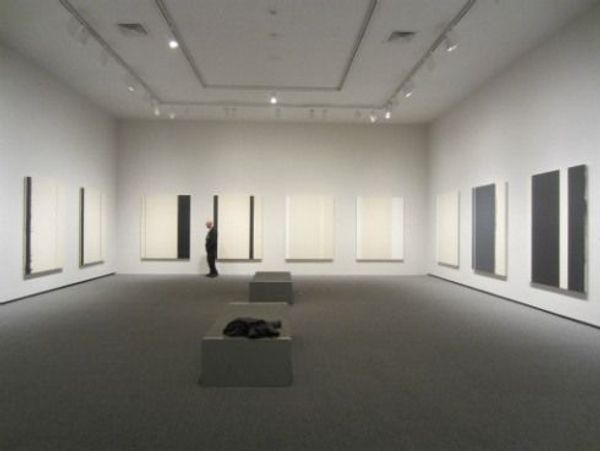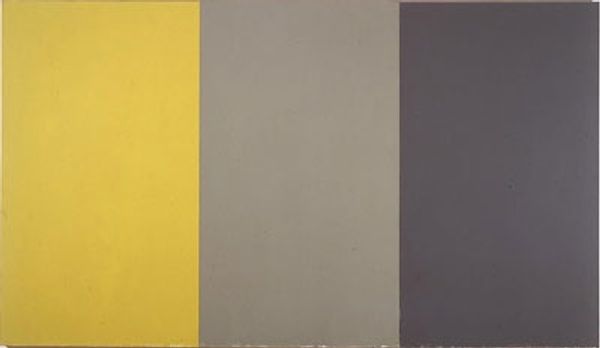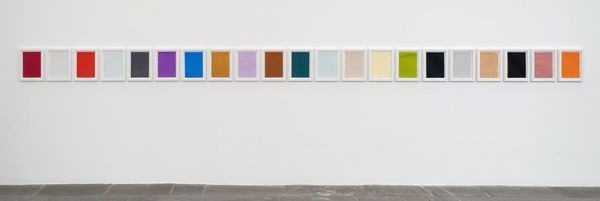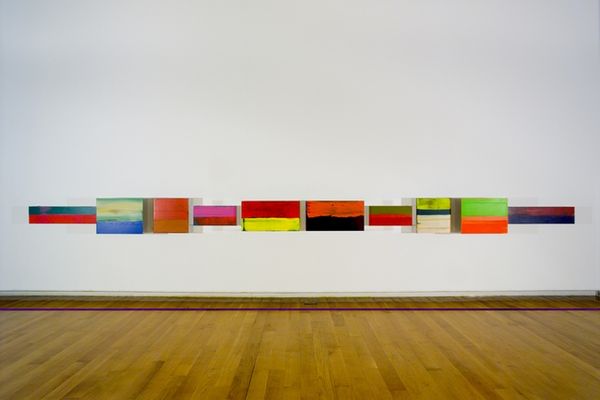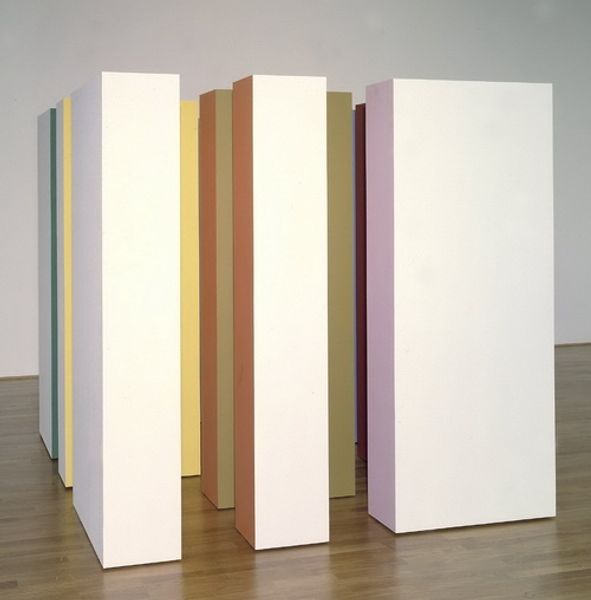
acrylic-paint
#
non-objective-art
#
minimalism
#
colour-field-painting
#
acrylic-paint
#
geometric
#
abstraction
#
line
#
modernism
Copyright: (c) Ellsworth Kelly, all rights reserved
Editor: We're looking at Ellsworth Kelly's *Spectrum V* from 1969, a series of rectangular panels rendered in vibrant acrylic paint. It’s almost like a physical manifestation of a color chart. What’s striking to me is how the eye is led across this chromatic scale, but I wonder, what am I really *seeing* here? How do you interpret this work? Curator: This work isn't just about observing color; it's about understanding the mechanics of how that color came to be and its relationship to mass production. Kelly’s precise application of acrylic, likely using industrial techniques, brings to the fore the idea of “color as object”. Consider the surface; the texture itself. It seems almost detached from any overt expression. What does this precise, seemingly detached application suggest to you about the artist's role? Editor: That's fascinating. I guess it de-emphasizes the artist's "hand," almost like the paint application is another manufactured component. So it challenges traditional ideas about the artist's unique touch, right? It feels closer to industrial design than classical painting, like minimalist sculpture more than fine art. Curator: Exactly. Think about the availability of these bright acrylic paints in 1969. They were products of chemical advancements, becoming readily accessible materials for artists, blurring the lines between high art and industrial materials. Also, what do you think about the panels? Aren't they drawing our attention away from pictorial illusionism? It highlights their objective presence in space. Editor: Yes! Each panel exists as a physical thing, not just a surface to be looked at. That helps me connect with the social context. It was produced at the end of a decade of industrial expansion and vibrant commercialism and there's almost like, celebration in Kelly's chromatic progression here. Curator: Precisely, and notice also the modular format; a repetition which reflects both mass production, and potentially mass consumption as well! The piece exists less as art, and more as a purchasable entity within an expanding, increasingly democratised marketplace. Editor: This completely shifts my perspective. It’s not just color; it's a commentary on production, material culture, and consumerism. Curator: Absolutely, and reflecting upon that broader cultural system becomes a means of considering our roles within that system.
Comments
No comments
Be the first to comment and join the conversation on the ultimate creative platform.
